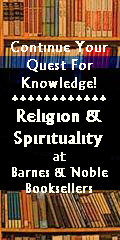
May You Be Blessed by the God of Your Heart |
The Geography of ShintoismThe Essentials of the FaithShinto, "the Way of the Gods", is the indigenous system of beliefs and rituals of the Japanese people. Shinto is a combination of two Chinese words: Shin, meaning divinity, and Tao, meaning "the way" or "the path". Founded: Shinto was founded around 2,500 years ago as a mixture of many tribal religions, each having had their own kami, or god. Shinto is a system of faith and a body of folkways, festivals, myths, ancient writings, and cultural attitudes relation to the kami. Adherents: Shintoism is an ethnic religion, based in Japan. Although it was affected by Taoism, Buddhism, and Confucianism as these religions spread to the islands of Japan from Asia and Korea, Shinto has remained a religion of the Japanese people. Distribution: The distribution listed below for Shintoists is from Markham, pp. 356-357:
Major Teachings: Shintoists believe in the sacredness of the whole universe and that man can be in tune with this sacredness. Every mountain, river, plant, beast, and all the diverse phenomena of heaven and earth have presiding spirits, or kami. Reverence is paid to the ancestors. Shinto has no creed, ethical doctrine, sacred book, philosophy, or theology of any kind. Its theory of human duty is follow your natural impulses and obey the laws of the state. Significant Writings: There are two great texts of Shinto belief and mythology, being the Kojike or Records of Ancient Matters, and the Nihongi or Chronicles of Japan. Both texts date from about 700 CE.
Major Divisions: In addition to State Shinto, another form existed called Thirteen Sects, or sectarian Shinto. It is distinct from the state cult in legal status, organization, properties, and ceremonies. The main beliefs and rituals of this sectarian Shinto are concerned with purification, mountain worship, faith healing, and the revival of the ceremonies of Shinto's distant past. Ryobu Shinto is a synthesis of Buddhism and Shinto where the kami are identified with bodhisattvas and Buddhist sanctuaries are attached to Shinto shrines (Eerdmans, p. 425). Major Holy Days: In shintoism, these are known as matsuri. The first day of each season, Oshogatsu or the New Year, and National Founding Day in February are major matsuri. Famous festivals include the Gion Festival in Kyoto, the Takayama Festival in Hida, and the Chichibu Festival northwest of Tokyo, where huge floats are included in the procession to the local shrine.
The Details about ShintoismThere are four Affirmations or basic beliefs in Shinto:
Over 90% of the people of Japan are Shintoist. Shinto is a non-exclusive religion and people may practice Shinto along with a second religion, since the beliefs of Shinto do not usually conflict with other faiths. Most Japanese people practice both Shinto and Buddhism.
The Geography of ShintoismThere are over 110,000 Shinto shrines and temples for the kami in Japan. Each shrine usually has some reason for its existence, such as a natural feature or an historical event. Many are even large enough to require an organized staff. Many Japanese homes may have small shrines within called kami-dana. Adherents are expected to visit these shrines at various life cycle events. Inside of the Torii, or gate, is a bridge over a small stream and a wash basin where worshippers wash their hands and face. Worship is conducted at a shrine by bowing, reciting a prayer, knocking or ringing a bell to attract the attention of the kami, and then giving offerings to the kami inside. At the ancient Shinto shrines at Ise, where Amaterasu is venerated, a new prime minister will report on the formation of the new cabinet. Other shrines, such as the shrine at Kashima on the island of Honshu, is attended by devotees of the martial arts. There are other shrines as well on the grounds. The Meiji Shrine located in Tokyo and dedicated to Emperor Meiji, is visited by 3 million people at New Year. The mountainous terrain of Japan has had a major effect upon the Japanese religious consciousness. Many shrines are located on the top of the mountains where many go to heighten and purify their spiritual life. Mount Fuji is the most famous of these, which has itself become a "quasi-religious symbol" for Japan (Eerdmans, p. 257).
ReferencesPlease note that references in English on Shintoism are sparse and may be out of date. Care must be taken in sifting through some of these materials, especially wartime propaganda.Ballow, Robert, Shinto, the Unconquered Enemy. New York: Viking Press, 1945. Holton, D.C., Modern Japan and Shinto Nationalism. Chicago: University of Chicago Press, 1943. Kageyama, Haruki, The Arts of Shinto. New York: John Weatherhill, Inc., 1973. Markham, Ian S., (Editor), A World Religions Reader. Cambridge, MA: Blackwell Publishers, 1996. Mason, J.W.T., The Meaning of Shinto. Port Washington, NY: Kennekat Press, Inc., 1935. Wheeler, Post, The Sacred Scripture of the Japanese. New York: Henry Schuman, Inc., 1952.
Links for More InformationAbout ShintoismInternational Shinto Foundation Jinja Online Nihingo.org 
Version 1.1 dated 07.06.98 Return to The Geography of Religion Menu Page |
 Symbols: Perhaps the most universally recognized symbol of Shintoism
is the Torii, shown on the button for this webpage. A Torii is
the entrance to a Shinto temple, being a gate composed of two vertical posts
supporting two horizontal beams and are often painted vermillion.
Symbols: Perhaps the most universally recognized symbol of Shintoism
is the Torii, shown on the button for this webpage. A Torii is
the entrance to a Shinto temple, being a gate composed of two vertical posts
supporting two horizontal beams and are often painted vermillion.